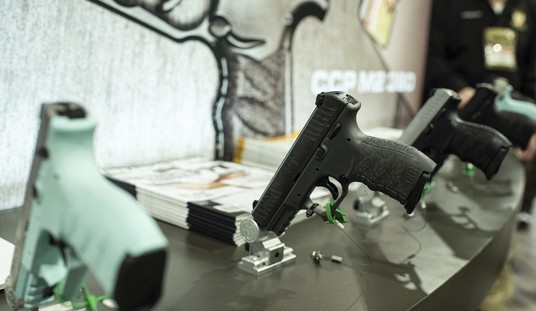The National Rifle Association’s “Eddie Eagle” program is a long-running firearms safety program first conceived in the late 80s as a way to teach children how to be safe should they ever come across a loaded firearm.
The precepts were simple: “If you find a gun, stop, don’t touch, leave the area, tell an adult.” These days it’s been changed to “Stop, Don’t Touch, Run Away, Tell a Grown-Up.”
Utterly non-controversial right?
Well, apparently not. Eddie Eagle has been stirring up controversy for decades.
According to an article from Splinter News, Eddie Eagle was conceived as a trojan horse.
To really understand the NRA’s agenda with Eddie Eagle, it’s important to go back to the beginning. Eddie was essentially conceived as a Trojan Horse. The character and program was developed in 1988 by Marion Hammer, the ultra-powerful Florida lobbyist behind a string of infamous gun laws, including the “Stand Your Ground” law. According to the Violence Policy Center—which released a report in 1997 describing Eddie Eagle as “Joe Camel with feathers”—Hammer created the program as a way to deter lawmakers from passing Child Access Prevention (CAP) Laws, which criminalize keeping firearms easily within reach of children.
Hammer’s argument was that, instead of punishing adults for keeping a dangerous object around children, children could learn to simply not touch or use a gun that they might have access to—effectively shifting the responsibility of not getting shot by a gun an adult left lying around to kids.
Taken to its logical extreme, what they’re calling for here is criminalizing having a gun in the house at all if children are present. Of course, that pesky Second Amendment keeps getting in the way.
The Eddie Eagle program faced plenty of backlash from schools, anti-gun violence organizations, the American Academy of Pediatrics, and even some police. In 1988, the Chicago Police Department deemed Eddie Eagle materials “sickening” and “garbage,” stating it was a “cynical effort” by the NRA to promote gun use.
Again, how is telling children NOT to touch a gun a “cynical effort” to promote gun use? These people are either lying or delusional.
Hammer, the program’s creator, tried to explain his position in 1997:
The firearms industry is “like any other industry. If you rely on today’s customers to carry you forever, then you’re going to be out of business soon,” [Hammer] said, but “Eddie Eagle has nothing to do with the marketing of guns.”
Which is, of course, correct. Eddie Eagle is a safety program from the NRA, not an outshoot of their political arm (emphasis mine).
The program neither offers nor asks for any value judgment concerning firearms. Like safety lessons about swimming pools, electrical outlets and matchbooks, Eddie Eagle’s sole purpose is to give children crucial information about what to do if they ever come across a gun. With firearms found in about half of all American households, it’s a message that makes sense. Eddie is never pictured holding or even touching a gun.
The author makes a good point that, twice now, disabled and unloaded handguns were placed in a backpack at a daycare and young children who had watched the Eddie Eagle videos still played with the guns. Of course, he then dismisses the program entirely as a result.
Here’s the thing, though. Yes, children have impulse control problems. No, they don’t always do what they’ve been taught. This does not mean that Eddie Eagle is ineffective. It’s a good starting point, but it needs to be combined with making sure guns are stored safely and parents are following up with training at home.
What Eddie Eagle is not is a “Trojan horse.”







Join the conversation as a VIP Member